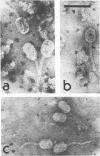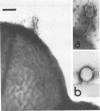Abstract
Phages may cause lysis of lactic acid bacteria used in cheese production. Three virulent bacteriophages specific for Streptococcus lactis subsp. lactis C2 were isolated and purified from cheese whey. They showed distinct plaque sizes, and although they had similar morphology by electron microscope examination, their dimensions were slightly different. The phage heads were elongated and hexagonal in shape, and the flexible tails appeared periodically cross-striated. They were DNA phages based on the acridine orange test. On infection, phage was adsorbed on the bacterial surface by the free end of the tail. After 80 min of incubation at 25°C, the phage heads appeared empty, slightly collapsed, and possessed a visible hollow tube through which the genetic material had been injected.
Full text
PDF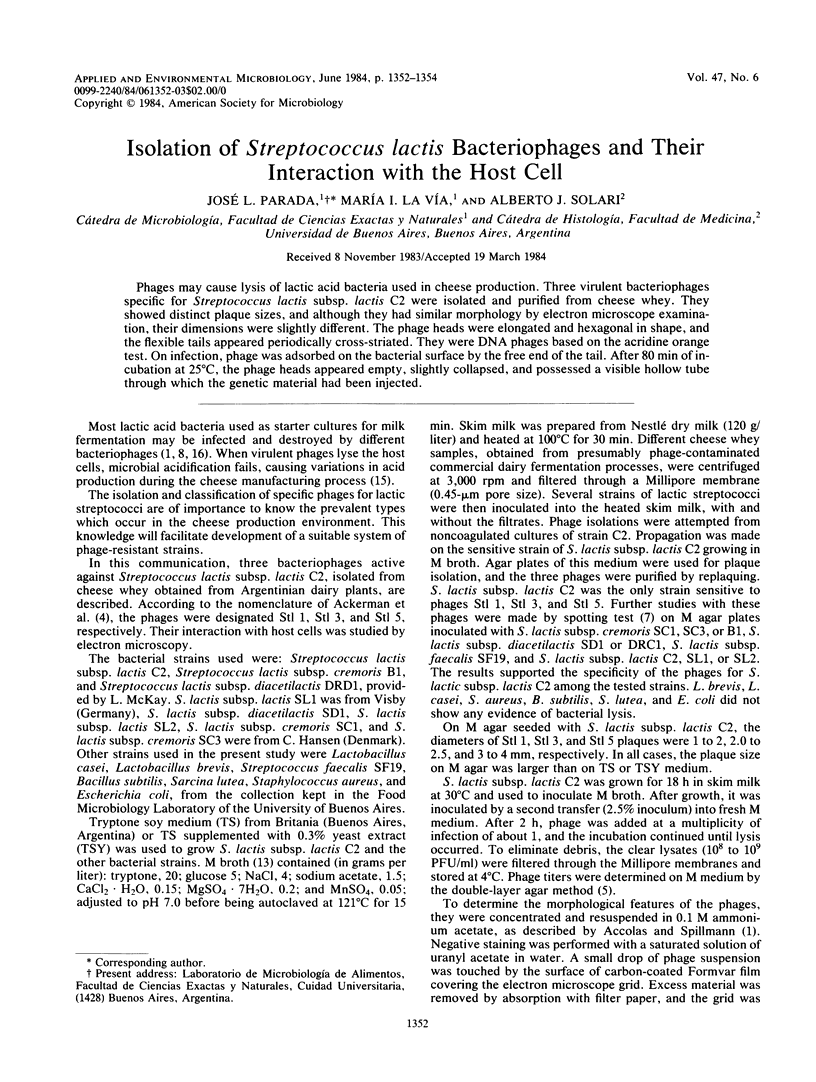
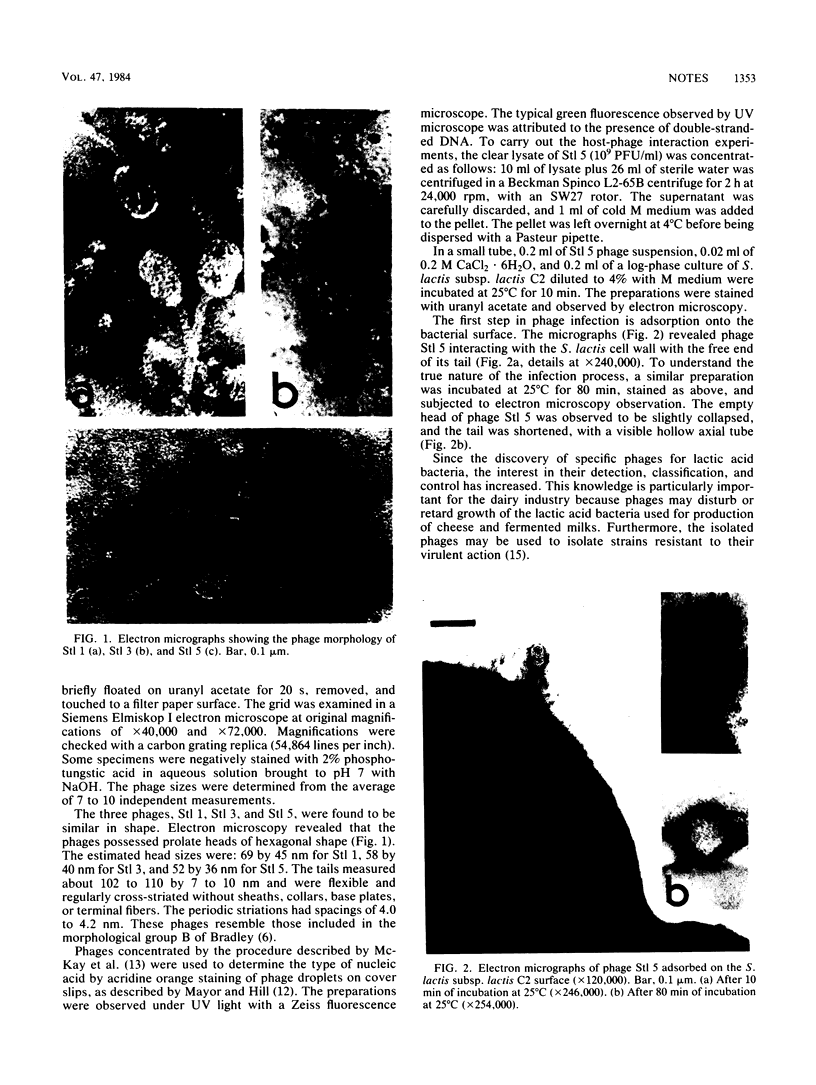
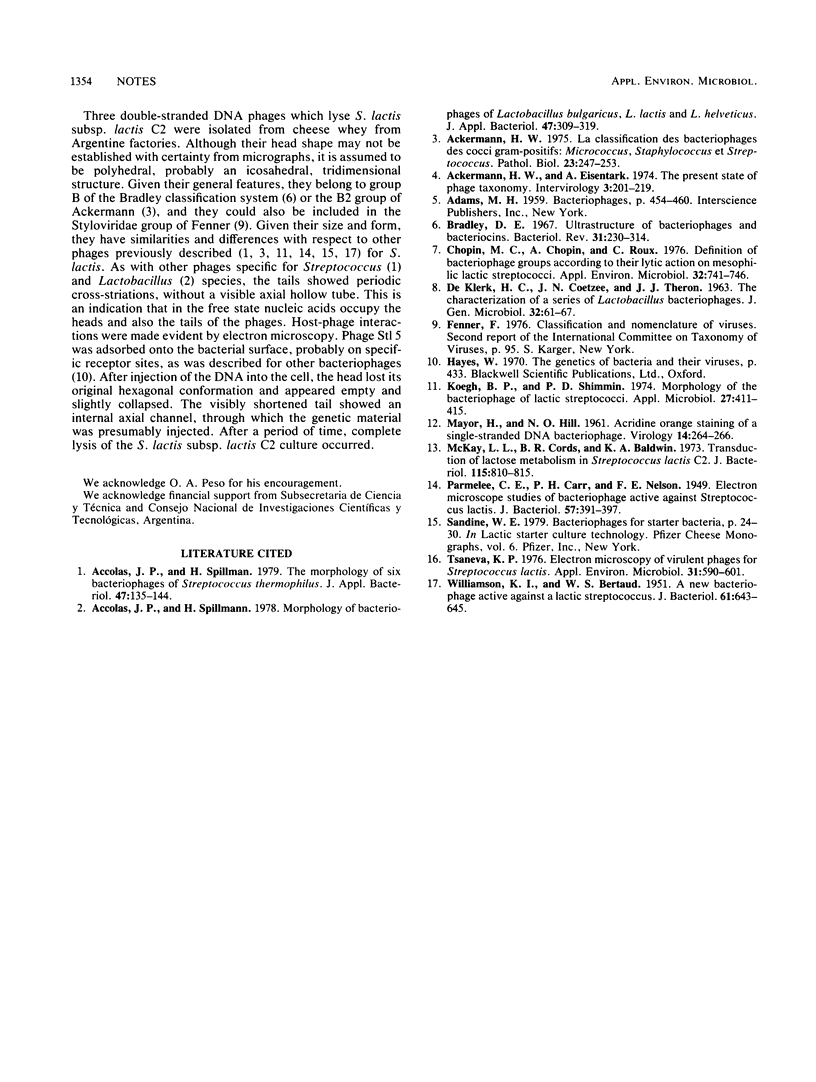
Images in this article
Selected References
These references are in PubMed. This may not be the complete list of references from this article.
- Ackermann H. W., Eisenstark A. The present state of phage taxonomy. Intervirology. 1974;3(4):201–219. doi: 10.1159/000149758. [DOI] [PubMed] [Google Scholar]
- Ackermann H. W. La classification des bactériophages des cocci Gram-positifs: Micrococcus, Staphylococcus et Streptococcus. Pathol Biol (Paris) 1975 Mar;23(3):247–253. [PubMed] [Google Scholar]
- Bradley D. E. Ultrastructure of bacteriophage and bacteriocins. Bacteriol Rev. 1967 Dec;31(4):230–314. doi: 10.1128/br.31.4.230-314.1967. [DOI] [PMC free article] [PubMed] [Google Scholar]
- Chopin M. C., Chopin A., Roux C. Definition of bacteriophage groups according to their lytic action on mesophilic lactic streptococci. Appl Environ Microbiol. 1976 Dec;32(6):741–746. doi: 10.1128/aem.32.6.741-746.1976. [DOI] [PMC free article] [PubMed] [Google Scholar]
- DEKLERK H. C., COETZEE J. N. THE CHARACTERIZATION OF A SERIES OF LACTOBACILLUS BACTERIOPHAGES. J Gen Microbiol. 1963 Jul;32:61–67. doi: 10.1099/00221287-32-1-61. [DOI] [PubMed] [Google Scholar]
- Keogh B. P., Shimmin P. D. Morphology of the bacteriophages of lactic streptococci. Appl Microbiol. 1974 Feb;27(2):411–415. doi: 10.1128/am.27.2.411-415.1974. [DOI] [PMC free article] [PubMed] [Google Scholar]
- MAYOR H. D., HILL N. O. Acridine orange staining of a single-stranded DNA bacteriophage. Virology. 1961 Jun;14:264–266. doi: 10.1016/0042-6822(61)90202-1. [DOI] [PubMed] [Google Scholar]
- McKay L. L., Cords B. R., Baldwin K. A. Transduction of lactose metabolism in Streptococcus lactis C2. J Bacteriol. 1973 Sep;115(3):810–815. doi: 10.1128/jb.115.3.810-815.1973. [DOI] [PMC free article] [PubMed] [Google Scholar]
- Parmelee C. E., Carr P. H., Nelson F. E. ELECTRON MICROSCOPE STUDIES OF BACTERIOPHAGE ACTIVE AGAINST STREPTOCOCCUS LACTIS. J Bacteriol. 1949 Apr;57(4):391–397. doi: 10.1128/jb.57.4.391-397.1949. [DOI] [PMC free article] [PubMed] [Google Scholar]
- Tsaneva K. P. Electron microscopy of virulent phages for Streptococcus lactis. Appl Environ Microbiol. 1976 Apr;31(4):590–601. doi: 10.1128/aem.31.4.590-601.1976. [DOI] [PMC free article] [PubMed] [Google Scholar]
- WILLIAMSON K. I., BERTAUD W. S. A new bacteriophage active against a lactic streptococcus. J Bacteriol. 1951 May;61(5):643–645. doi: 10.1128/jb.61.5.643-645.1951. [DOI] [PMC free article] [PubMed] [Google Scholar]



